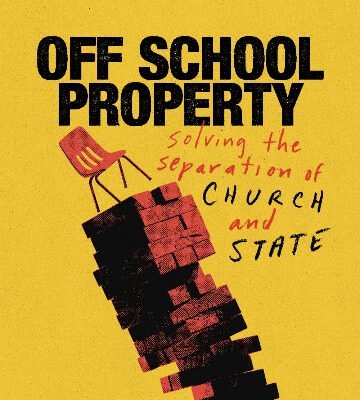Is there any difference between love, desire, and lust? If we’re listening to today’s conversations, not much! Tolerance and equality, it seems, can also be tainted to mean accepting what isn’t moral or good.
Allow me to explain. A friend — we’ll call him George — dearly loved three young women. This reciprocal relationship quickly developed into “more than good friends.” That’s when things apparently got complicated. George’s desire was equal among them all, and conflicted with a society that dictated he could legally marry only one.
But the foursome weren’t dissuaded. They assumed suburban “family life” and, over time, hoped to legalize their relationships. In effect, George was “husband” to three women, which isn’t uncommon in some countries. In terms of Western law, however, the merits of consent and love in a union of more than one man and one woman are not considered eligible criteria for the historical, religious, legal, and widely accepted definition of marriage.
Legally, George and his wives weren’t married. Civil and historical law defines marriage as the monogamous, lifelong union between one man and one woman, the origins of which lie at the heart of Christianity. So they sought a compromise. A civil union of sorts was attempted to legitimize their family status. By that time, several children had been born. Various government departments soon began investigating. The news media quickly picked up the story, and of course, it made sensational weekend reading.
Were George and these three women not consenting adults who chose their relationships? Weren’t they in love? Didn’t they have the freedom to choose? They seemed happy! Perhaps it’s more than being all about love? The vexing question in a pluralistic society, of course, is who dictates how they should live their lives, or deny them their “equal rights.” This is the current and popular narrative that seems to reverberate within media and politics. Some uphold traditional values, such as marriage being exclusively between a man and a woman, and those who espouse other models, such as homosexuality, lesbianism, union with under-age children, transgenderism, as well as polygamy.
Family redefined
Governed by higher law, civil laws historically had accepted that healthy family units formed the basis for strong and enduring societies: a family constituting a paternal father and a maternal mother, united for life, and including the nurture of any children born to that union. After all, that’s the premise Christianity understands as the God-ordained mandate for human life. Reflected in the pages of its constitution, the Holy Bible, marriage vows generally proclaimed, “A natural union, but a divine institution.”
Today, unfortunately, we’re seeing a vocal minority attempt to redefine the family unit without understanding the future consequences, be they legal or societal. The Christo-centric values that Western society emerged from, it seems, have all but been forgotten. Historically, as woven and reflected throughout our legal systems, there exists the understanding that a loving and responsible father and mother together provide the best environment for a stable, nurturing home for the next generation. Traditional marriage also furnishes a framework in which children have a right to life, a right to be protected, as well as a right to know who their biological father and mother are, and benefit from that nurture. Traditional marriage preserves the family as no other unit can.
Thus, the relationship within marriage between a man and a woman reflects a higher relationship of what God desires of us: holiness, fidelity, and covenant. Interestingly, most gays don’t want traditional marriage for the sanctity, holiness, and godliness it represents. Their desire is reportedly to first malign and then ultimately destroy it. It is widely accepted that unions outside of marriage contribute to higher than normal rates of depression, dysfunction, and suicide. Homosexual cultures historically are recorded as being more violent and generally short lived.
Blurred lines
In terms of defining what a healthy desire is, we must understand the vast chasm between the definition of love and lust. Here, society seems to have blurred the lines. Genuine love leads to covenant, a lifelong union between a man and a woman. This nurture, in turn, is extended to the children. As a base desire, lust is a powerful and dangerous agent. It often parades as love but seeks unhealthy sexual fulfillment as it chooses.
Lust is not love. It’s an aberration, a fanciful, unfettered, and unhealthy selfish orientation. It may parade as virtue, but it isn’t love — not historically, legally, or morally. Heightened by lack of self-control, lust is the very opposite of what God intended in the Ten Commandments when He said, “You shall not commit adultery” and “You shall not covet.”
The conversation we’re currently hearing in the media and in politics regarding the definition of marriage is one of foundational challenges we face today. Like a ship without a compass, blown with every uneasy wind, a noisy minority is actively and avidly working to simultaneously erase history’s other virtues and bastions beyond traditional marriage, especially those with Christian origins.
Of course, although traditional marriage is generally upheld within the faith community, the virtues and blessing of marriage are generally poorly argued. The Christian community has largely failed to connect marriage to Jesus Christ. The Lamb and His Bride is the only platform where the Christian voice must be united. Ordained at creation, traditional marriage is holy and proven, and mirrors a divine reality.
The alternatives of anti-God thinking will result in consequences like those of civilizations remembered for escalated violence and their eventual collapse. Sadly, the assault on traditional marriage is accompanied today by concerted efforts to remove it from its past faith history, and repaint it within the context of a purely secularist and evolutionary modeled context — a moral-less agenda that too many have blindly accepted. Changes to legislation are sometimes slow and barely noticeable. At other times they are accompanied by vocal and persuasive politics, but either way, progressively swaying the morality and opinion of greater numbers of people.
The truth remains that lust — uncontrolled desire — is not love. It has no place in marriage. It has no place in relationships. It has no place in society. For some it is an illness; for others it is an obsession and perversion.
Moving forward
Concerned followers of Jesus need to know that now is the time to be accounted for. Now is the time to courageously speak for Jesus. Our neighbors, friends, workmates, parents, and grandparents, as well as the “Georges” of society, need to know of the healing and new life offered them in Christ alone. They also need to know the consequences of an alternate legacy.
It’s time for the church community to voice genuine concern in its reformist voice for the brokenness of society. It’s also time to articulate solid, immovable reasons in Jesus Christ as to why belief in traditional family values, modeled over thousands of years and ordained at creation, is the only way forward.







